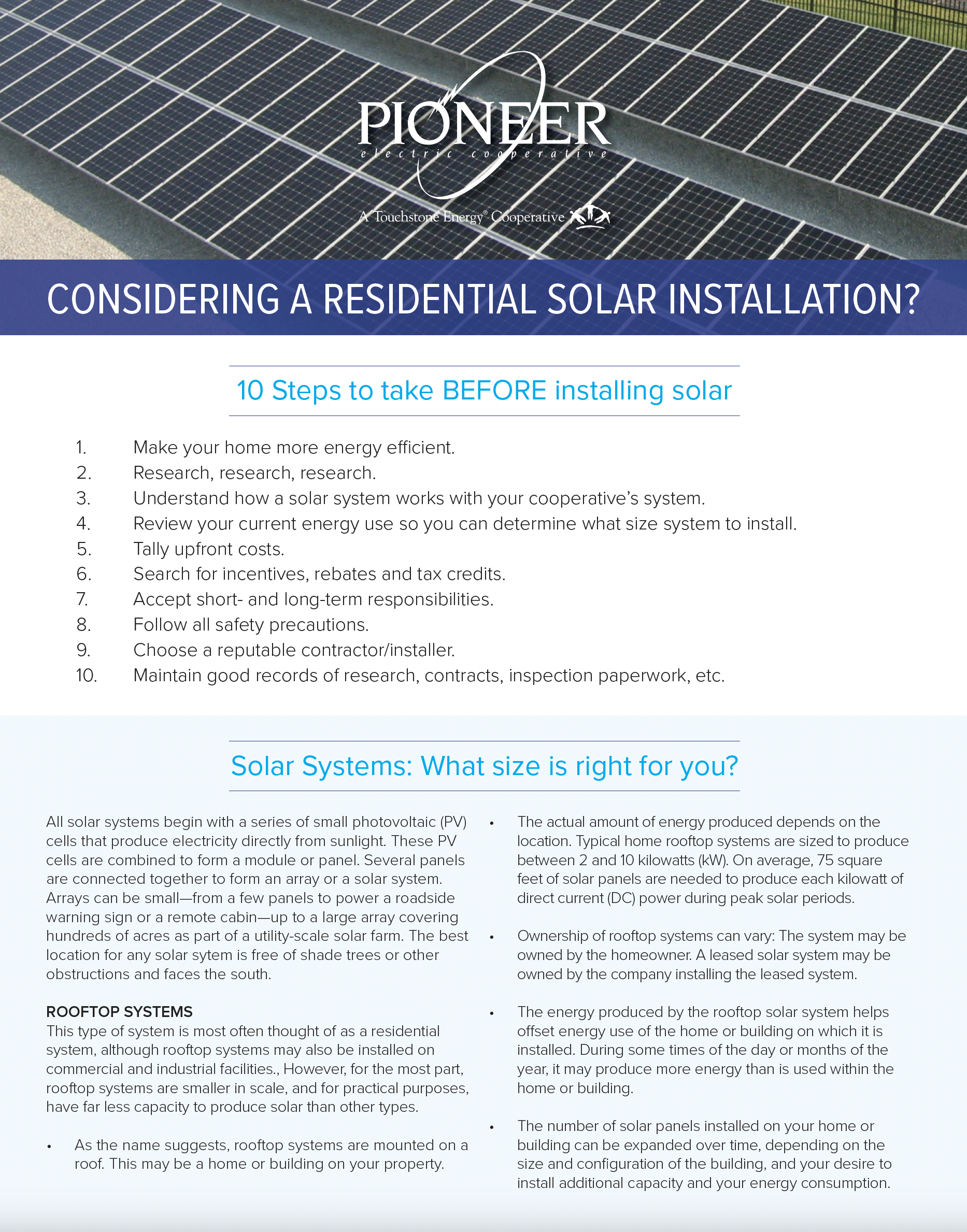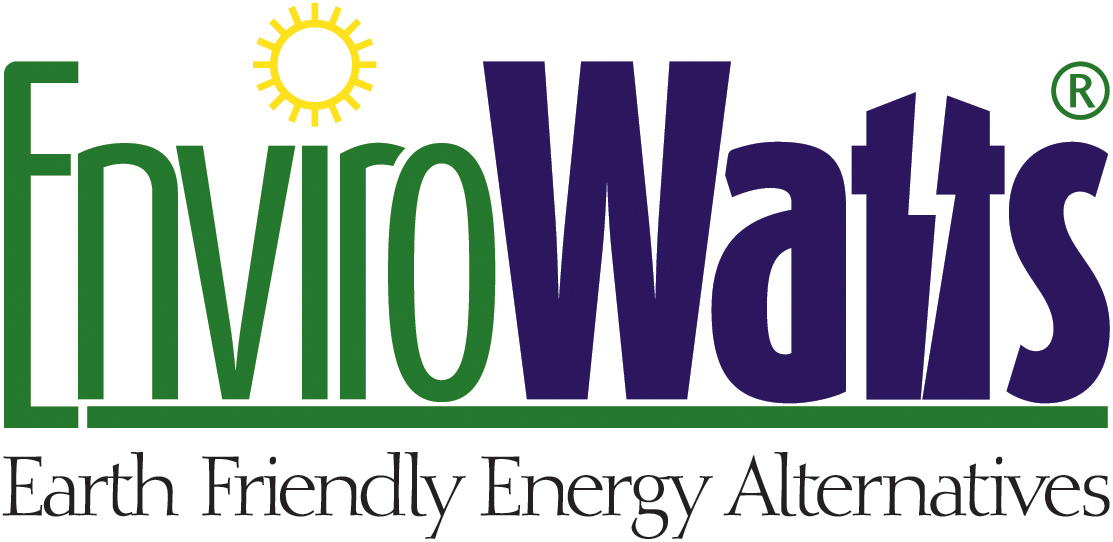
Renewable Energy
Renewable resources continue to grow in popularity. Pioneer offers options to allow members to use green energy. Renewable sources — including solar — make up approximately five percent of Pioneer’s overall power supply. Therefore, Pioneer wants to make sure our members are aware of our processes and options when it comes to solar energy.
It’s important that you work with your cooperative before purchasing equipment or signing a contract with a solar vendor to determine what type of system works best for you, your lifestyle, and your utility provider. Interconnecting a solar array with Pioneer’s distribution system requires an application, as well as contractual agreements.
Please contact Pioneer at 800.762.0997 or member@pioneerec.com for additional information.
Solar Resources

Frequently Asked Solar Questions
How to we generate electricity from the sun?
How much electricity can I generate?
What happens with a solar PV system at night and on cloudy days?
What happens with a solar PV system during power outages?
How long is the payback period on a solar PV system?
How long do solar PV system last?
How can I know if a solar PV system will work on my house?
If my house is not ideal for a solar unit, are there other solar options?
What is distributed generation (DG)?
What are the primary differences between central station generation and distributed generation?
How does distributed generation affect the current energy model?
What is Pioneer Electric Cooperative's position with respect to distributed generation?
Is distributed generation right for me?
What is the process of interconnecting distributed generation?
What is an interconnection agreement, and does Pioneer Electric Cooperative require one?
What are distributed generation installation and operating costs?
What tests will be needed to ensure the system is operating properly?
Who conducts the necessary inspections?
Are there state or federal incentives or tax credits?
How does net metering impact the entire utility system?
What is net billing?
If there is a catastrophic event, who pays for the loss?
If there are injuries to the public or crew during the installation process, who is responsible?
What if I decide to remove the system, who is responsible?

OurSolar is a community solar program that offers one of the cleanest and most affordable renewable energy sources available. By grouping solar panels together, costs can be shared, power output can be maximized, and hassles of rooftop installation can be avoided.
Members participate for less than $1 per month, per panel. Please contact us at member@pioneerec.com or 800.762.0997 to be placed on a waiting list.
OurSolar is provided by Buckeye Power on behalf of Pioneer Electric Cooperative and its members.
OurSolar 2.0
Buckeye Power added a new 2.66 megawatt solar installation located in Hancock County, Ohio to the OurSolar program in 2022 and combined Pioneer’s solar array in Urbana with the rest of the state cooperatives’ existing solar panels.

You can make a difference through the EnviroWatts® program. EnviroWatts is a voluntary, earth-friendly and inexpensive way to produce electricity and support renewable energy. With each $2 block of EnviroWatts you purchase, you can be assured that 100-kilowatt hours of electricity were produced from renewable energy sources.
Download the printable application
A bulk purchase option is available for consumer-members who wish to purchase more than (25) 100-kWh blocks per month.
Please contact Ted Riethman at 800.762.0997 or energyadvisor@pioneerec.com if you would like to purchase in bulk.
© 2024 Pioneer Electric Cooperative.
All rights reserved. | Web design by Jetpack





